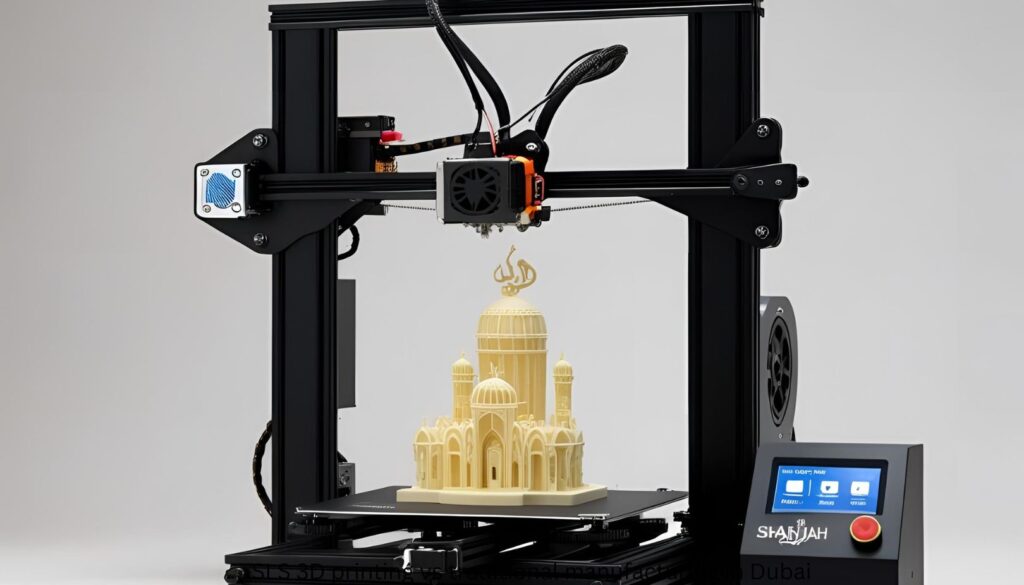Introduction
Dubai’s manufacturing sector is undergoing a transformative shift, embracing advanced technologies to enhance efficiency and innovation. At the forefront of this evolution is Selective Laser Sintering (SLS) 3D printing, a method that offers distinct advantages over traditional manufacturing processes. This article delves into the comparative benefits of SLS 3D printing vs traditional manufacturing in Dubai, highlighting how SLS is redefining production paradigms in the region.
Understanding SLS 3D Printing
Selective Laser Sintering (SLS) is an additive manufacturing technique that uses a high-powered laser to fuse powdered materials, typically nylon or polyamide, layer by layer to create solid structures. Unlike traditional manufacturing, which often involves subtractive processes like cutting or drilling, SLS builds objects from the ground up, allowing for complex geometries and reduced material waste.
Advantages of SLS 3D Printing Over Traditional Manufacturing
Design Flexibility
SLS enables the creation of intricate designs without the need for support structures, allowing for greater design freedom and the production of complex parts that would be challenging or impossible with traditional methods.
Material Efficiency
By utilizing only the necessary amount of material and eliminating the need for molds or tooling, SLS reduces material waste and associated costs, making it a more sustainable option.
Rapid Prototyping and Production
SLS accelerates the prototyping phase, enabling faster iterations and reducing time-to-market. This agility is particularly beneficial for industries that require quick turnaround times.
Strength and Durability
Parts produced through SLS exhibit excellent mechanical properties, including high strength and durability, making them suitable for functional testing and end-use applications.
Applications of SLS 3D Printing in Dubai
Aerospace and Automotive
SLS is widely used in the aerospace and automotive sectors in Dubai to manufacture lightweight yet durable parts, enhancing fuel efficiency and performance.
Medical and Healthcare
The technology facilitates the production of patient-specific medical components, such as prosthetics and implants, ensuring better compatibility and functionality.
Architecture and Construction
Architects leverage SLS for creating detailed models and components, enabling more accurate planning and execution of construction projects.
Challenges and Considerations
While SLS offers numerous advantages, it also presents certain challenges:
- Post-Processing Requirements: Parts may require additional finishing processes to achieve desired surface qualities.
- Material Limitations: The range of materials suitable for SLS is narrower compared to traditional methods, potentially limiting its applicability for certain projects.
- Initial Investment: The cost of SLS equipment can be high, necessitating careful consideration of return on investment.
Conclusion
The adoption of SLS 3D printing in Dubai signifies a pivotal move towards more efficient, flexible, and innovative manufacturing practices. By understanding the comparative advantages of SLS 3D printing vs traditional manufacturing, businesses can make informed decisions that align with the evolving industrial landscape of the region.
FAQs
SLS (Selective Laser Sintering) builds parts layer-by-layer using laser-fused powders, offering design flexibility and less material waste. Traditional manufacturing involves subtractive methods like cutting or molding, which are better for mass production but less flexible.
Yes, for low to mid-volume production and prototypes, SLS can be more cost-effective due to reduced tooling, faster turnaround, and minimal waste.
Industries like aerospace, automotive, healthcare, and architecture in Dubai are increasingly adopting SLS for its speed, durability, and design freedom.
Absolutely. SLS is widely used for producing end-use parts, thanks to its high mechanical strength and material consistency.
Yes. SLS reduces material waste, energy consumption, and enables local production—making it an eco-friendly alternative to traditional methods.
Dubai promotes 3D printing through government initiatives, smart manufacturing strategies, and infrastructure investments, aiming to become a global hub for additive manufacturing.
Unlock Innovation with Dubai’s Leading 3D Printing Experts
Ready to accelerate your product development and streamline manufacturing with cutting-edge 3D printing? Partner with the UAE top-rated additive manufacturing and engineering specialists. From rapid prototyping to end-use production, we deliver precision, speed, and scalability tailored to your business goals.
👉 Let’s build the future together — Contact us now or send your project brief to get a personalized solution today.
🔍 Explore our full suite of 3D printing, product design, and engineering services directly on our website.


